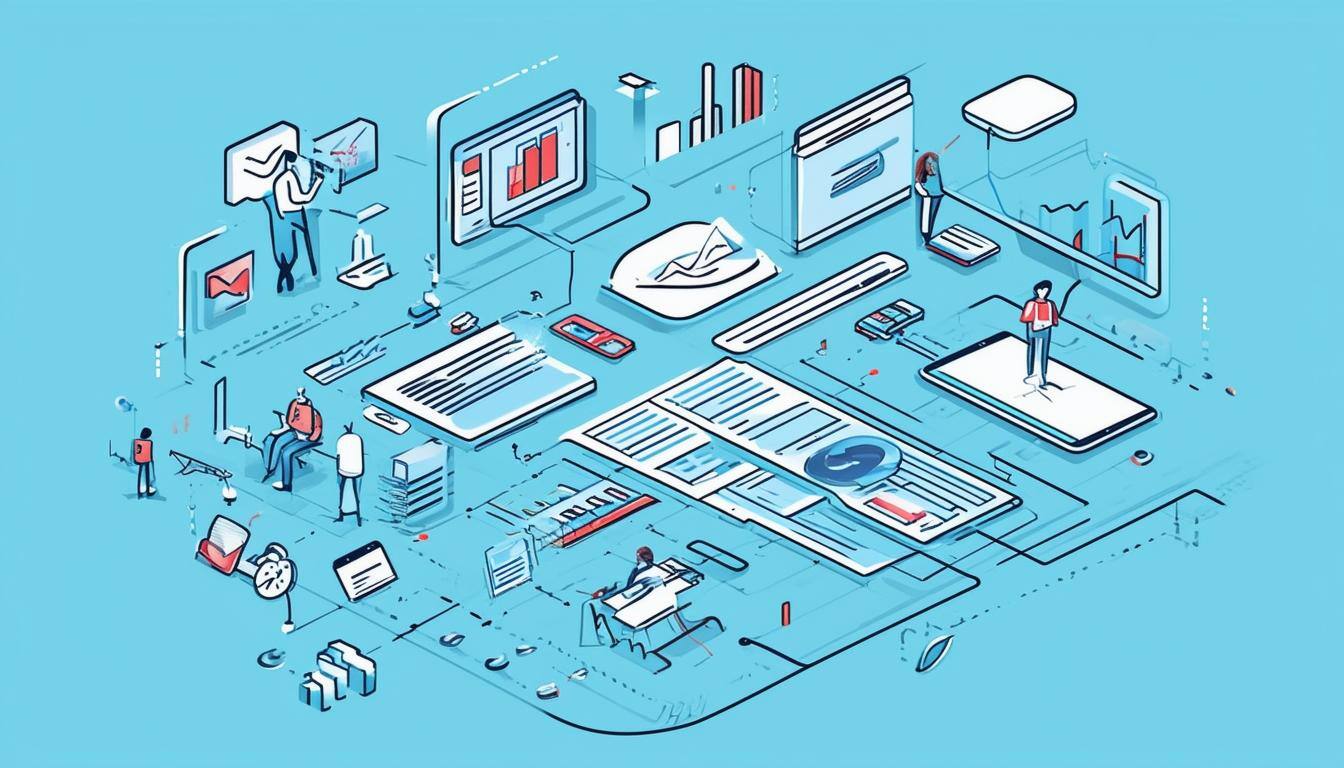Marketers today face a big dilemma. On one hand, data is the engine that powers personalization,...
Relevance at Scale: The New Frontier of B2B Marketing
For years, the buzzword “personalization” has dominated the conversation in B2B marketing. Marketers and sales teams alike have rallied around the idea that calling buyers by their first names, referencing their companies, or tailoring subject lines was enough to move the needle. And for a time, it worked.
But not anymore.
Today’s buyers are smarter, more connected, and busier than ever before. They don’t just want to feel seen—they want to feel deeply understood. And here’s the twist: personalization isn’t dead—it’s just evolved.
In the past, personalization meant knowing a buyer’s name or company and referencing it in your outreach.
Currently, personalization encompasses a more profound understanding. It extends beyond mere superficial acknowledgment and involves linking the buyer's role, their priorities, and the significant challenges they face. The goal is to offer solutions so precisely aligned with their needs that they find it difficult to consider collaborating with anyone else.
This shift is why hyper-relevance has become the linchpin of B2B marketing and sales strategies. Today, relevance and personalization are inseparable. The challenge, though, is delivering that relevance—not just to a handful of accounts, but at scale.
Let’s explore how we got here and how marketers can operationalize relevance at scale to create real impact in the modern buyer journey.
Redefining Personalization: It’s About More Than Knowing a Name
Personalization used to mean inserting tokens like or into email subject lines and marketing copy. It was surface-level and, to be honest, easy to automate. However, in the intricate B2B environment of today that kind of personalization falls flat. Buyers see through it, and it doesn’t build trust.
What we need now is a deeper, more authentic personalization—one that goes beyond recognition and focuses on understanding. This new definition of personalization is about delivering tailored value based on:
-
A buyer’s unique role in their organization.
-
Their industry’s specific challenges and opportunities.
-
Their current stage in the buying journey.
-
The pressures and goals driving their decisions.
In this context, personalization serves as the cornerstone of relevance. It involves engaging with buyers in a manner that is both significant and practical, rather than merely "customized." When personalization is integrated with relevance, it becomes scalable, enabling the creation of campaigns that deeply resonate, whether they are targeted at individual buyers or larger groups.
ABM’s Journey: From 1:1 to 1:Many
Account-Based Marketing (ABM) has long been associated with deep personalization. The foundation of ABM is its highly targeted approach, designed to create meaningful connections with key accounts. Historically, this has been executed as 1:1 campaigns—laser-focused on specific high-value prospects.
But here’s the good news: ABM isn’t just for a handful of top-tier accounts anymore. Thanks to advancements in data and technology, we can now apply ABM principles to 1:many campaigns, targeting broader segments with messaging that still feels personal and relevant.
Here’s how I think about it: 1:many campaigns are like scaling ABM with a megaphone. You’re delivering tailored messages to a larger audience without sacrificing the specificity that makes ABM so effective. The key is understanding the buyer, not just as an individual, but as a representative of their market, their industry, and their unique set of needs.
This evolution of ABM is unlocking enormous opportunities for marketers to blend scale with precision, creating campaigns that resonate deeply without burning out resources.
Operationalizing Personalization and Relevance at Scale
So, how do we bring this evolved definition of personalization to life across marketing and sales strategies? It starts with a commitment to understanding the buyer—not just at the surface level, but at their core.
Here are some actionable strategies to operationalize personalization and relevance at scale:
-
Deep Buyer Knowledge:
Move beyond firmographics (industry, company size, etc.) and dig into what your buyers care about. What markets do they serve? What challenges keep them up at night? What trends are influencing their industries? This level of understanding is the foundation of hyper-relevance.
-
Persona-Led Teams
Build cross-functional teams dedicated to specific buyer personas or industries. These teams or "pods" should include members from marketing, sales, customer success, and operations who collaborate to create targeted campaigns and assets. For example, if you’re selling to revenue operations professionals, your pod should focus deeply on their priorities, pain points, and metrics of success.
-
Signal-Based Targeting
Stop relying solely on third-party intent data. Combine it with first-party signals and behavioral insights to create a complete picture of where your buyers are in their journey—and what they need from you next.
-
Unified Sales & Marketing Alignment
Relevance doesn’t happen in silos. Marketing and sales need to work hand-in-hand to ensure messaging, timing, and delivery are seamless. When both teams share a deep understanding of the buyer and align on how to address their needs, magic happens.
-
Content That Educates, Not Sells
The days of pitching features are over. Buyers crave content that helps them solve problems and make decisions. Whether it’s a blog post, a webinar, or an email campaign, your content should prioritize value over promotion.
The Role of Technology in Hyper-Relevance
Technology has significantly transformed the ability to achieve relevance on a large scale. Utilizing tools such as CRM systems, intent data platforms, and automation technologies, there are numerous methods available to effectively integrate buyer insights with marketing strategies.
But here’s the caution: technology is only as good as the strategy behind it. If you don’t have a clear understanding of your buyers and a solid plan for engaging them, no tech stack will save you. True innovation occurs when technology is combined with creativity, empathy, and strategic planning.
Measuring Success: The ROI of Personalization and Relevance
Evolved personalization and relevance aren’t just nice ideas—they deliver tangible business results. Here’s how to measure their impact:
-
Engagement Metrics: Look for increased open rates, click-through rates, and content downloads, which indicate that your messaging is hitting the mark.
-
Pipeline Velocity: When buyers feel understood, they move through the funnel faster.
-
Net Retention Rate (NRR): Relevance isn’t just for acquiring new customers; it’s critical for retaining and growing existing accounts.
By focusing on these metrics, marketers can prove the ROI of relevance-driven strategies and secure buy-in for continued investment.
Personalization Evolved—Relevance at Scale
As we step into 2025, one thing is clear: B2B marketing is evolving, and buyers are demanding more from us. Personalization isn’t dead—it’s grown up. And when combined with hyper-relevance, it becomes the key to connecting with buyers in a way that’s both meaningful and scalable.
This approach transcends mere competitiveness; it focuses on generating genuine, enduring value for the buyers we engage with. By achieving this, all stakeholders benefit.
.png?width=267&height=52&name=Jen_Spencer_Strategy_Logos_Light-Long%201%20(1).png)



